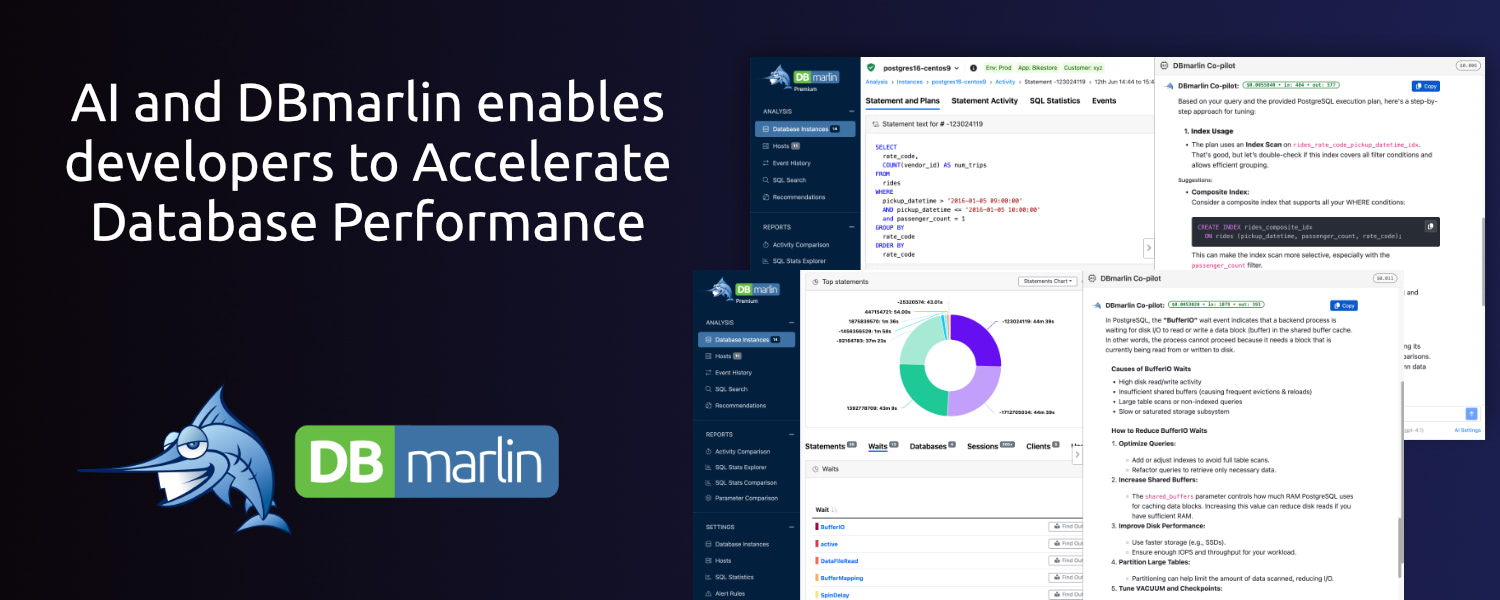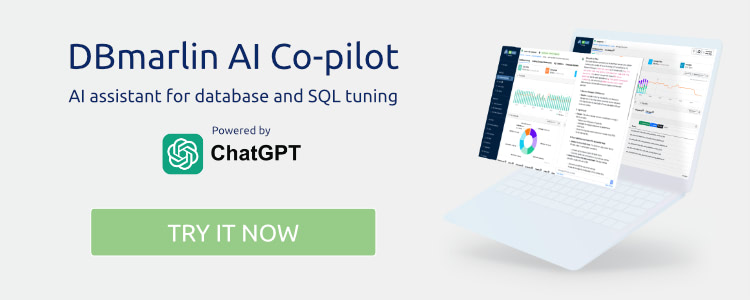AI and DBmarlin enables developers to Accelerate Database Performance

In the not-so-distant past, improving database performance was a job for specialists. DBAs and performance tuning experts were often the only ones equipped to understand slow SQL queries, execution plans, and indexes. But we’ve entered a new era — one where developers can take control, combining tools like DBmarlin with the power of Large Language Models (LLMs) to optimise performance faster and with more confidence.
From Guesswork to Guided Optimization
DBmarlin already makes it easy for developers to identify slow SQL queries and spot performance bottlenecks across multiple database platforms like Oracle, PostgreSQL, MySQL, SQL Server and more. But the game-changer is DBmarlin Co-Pilot — which allows developers to turn those insights into natural language prompts that can be fed into any LLM from providers such as OpenAI, Anthropic, Google, Meta, Deepseek, or your own self-hosted model, to get explanations and actionable recommendations.
What Kind of Recommendations Can an LLM Provide?
Once armed with the slow query and context from DBmarlin, developers can ask their LLM for help. The response is often surprisingly helpful — not just textbook “add an index” advice, but deeper suggestions such as:
- Refactoring subqueries or joins for better performance
- Rewriting CTEs to avoid materialization overhead
- Detecting unnecessary casts or implicit conversions
- Suggesting appropriate data types for faster I/O
- Reducing cardinality mismatches and optimising filters
- Identifying missing statistics or suggesting better table partitioning
These are the kind of tips you’d expect from a senior DBA, now available instantly via an AI assistant.
Measure, Compare, and Deploy with Confidence
Once you’ve made performance improvements in dev or staging, DBmarlin’s snapshot feature lets you capture and compare performance before and after the changes. This gives a clear picture of what improved — or didn’t — and by how much.
And when you’re ready to deploy, you can snapshot production performance before and after rollout, making sure the changes hold up under real-world load.
Integrating With Change & Release Tools
For teams already using CI/CD or change management platforms, DBmarlin integrates seamlessly — adding change markers to its performance timeline view. This means developers can link specific code or database releases to spikes or drops in performance, making root cause analysis far easier.
AI + Observability = A Better Dev Experience
Combining DBmarlin with your LLM of choice turns performance tuning into something every developer can tackle — no need to be a database guru. You’ll go from slow query → AI explanation → improvement → proof of success, all in a matter of minutes.
In the post-AI world, optimising database performance is no longer just a DBA’s job. It’s a developer superpower.

